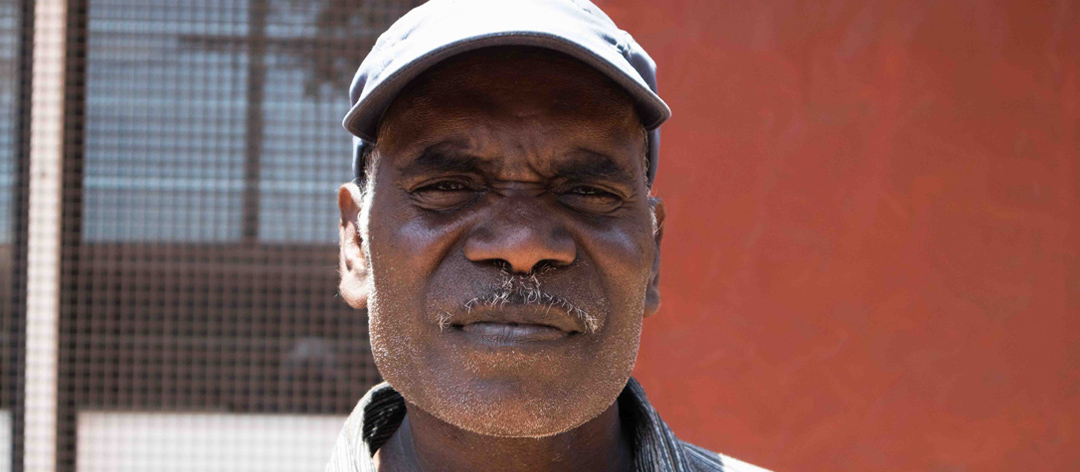Leonard was born in the bush between Djimaḏi homeland and the Blythe River where his mothers covered him with raŋan (paperbark). He explains that he and his family didn’t have a need for much clothing.
In the late 1960’s his mother took him to the closest settlement, Maningrida (approximately 200km’s away) to attend school, however at the age of 7 or 8 he ran away and returned to his family at their homeland. He explains, ‘I learnt from following my ŋathi’mirriŋu (mother’s father). He was a very old man with five wives. My märi (mother’s mother) was his first wife. I learnt my ŋäṉḏi (mother) and märi (mother’s mother) songlines from him as well as the Maḻarra, Walamaŋu and Gamaḻaŋga elders. I sat with my ŋathi’mirriŋu during ceremony, and traveled to different country for ceremony – I was learning where to find water and food, where the tides ran, and the songlines crossed.’
Leonard knows his father’s Gorryindi country and mother’s Walamaŋu Gamal country intricately, as well as the wäŋa, manikay ga rom (country, songlines and law) of those and the connecting Maḻarra and Gamaḻaŋga clans.
His father spoke Djinaŋ-Yan-nhaŋu, and his mother spoke Burarra and Walamaŋu and Leonard speaks both these languages along with the lingua franca at Milingimbi, Djambarrpuyŋu.
Leonard now lives at Boḏiya homeland on Milingimbi Island. Boḏiya belongs to the Gorryindi and Gamaḻaŋga clans of the Dhuwa moiety. As a Gorryindi man, this makes Leonard owner of the wäŋa ga riŋgitj (country and songline) of Boḏiya. Leonard can paint the miny’tji (designs) belonging to Boḏiya and is obliged to watch over and ensure that Walamaŋu people correctly execute their miny’tji, buŋgul ga rom (painting, ceremony and law). He can stand at Boḏiya and sing the stingray section of the riŋgitj (songline). The other name for Boḏiya is Buḻku, he says. Buḻku is the billabong the stingray made.
Leonard explains the interdependent relationship of the Gorryindi, Gamaḻaŋga, Maḻarra and Walamaŋu clans and how these relationships are reflected in the wäŋa (country). For example the Gorryindi waters, Walamaŋu waters and Gamaḻaŋga waters meet and come apart at sacred sites called Gäpirra. Gäpirra and other significant sites are depicted in Leonard’s artwork.
Leonard remembers the Yolŋu art movement and fishing industry that was strong at Milingimbi in the 1960’s. Today Leonard is key in continuing ceremonial practices and transmission of cultural knowledge. Inspired by the teachings of his forefathers he works with youth at risk, running raypirri (discipline) camps at Räpuma island (Leonard’s Gorryindi homeland). Leonard explains that during the Ŋärra (men’s law ceremony) raypirri ga mundhurr (discipline and reward) are given in different forms. ‘The reward is the manikay (song) the men sing to the boys. The Ŋärra is rom ḻuku (law that can’t be moved) and teaches respect for wäŋa (country), women and girls, young and old.’
Birth
13/01/1963
Clan
Gorryindi
Language
Djinang
Yan-nhangu
Homeland
Rapuma, Bodiya
